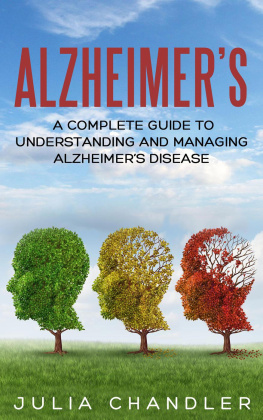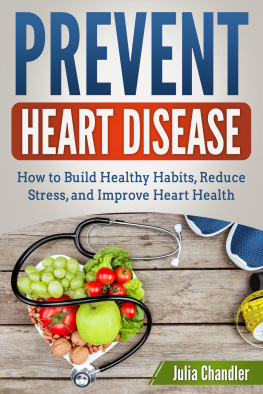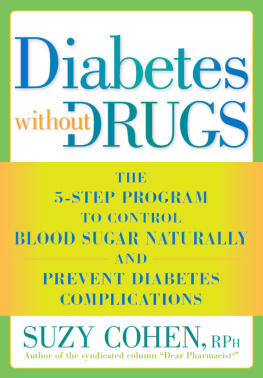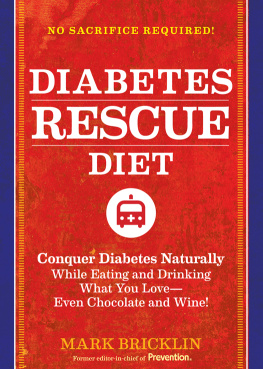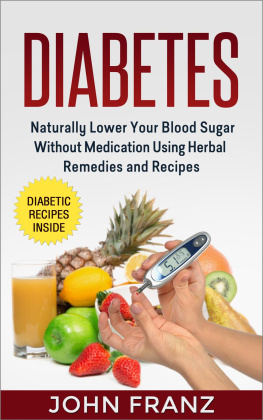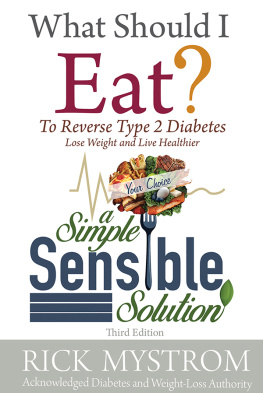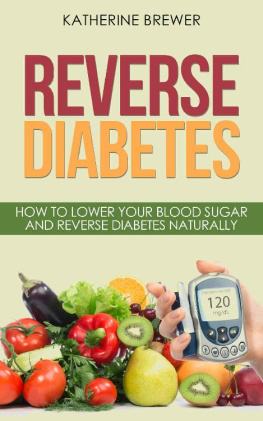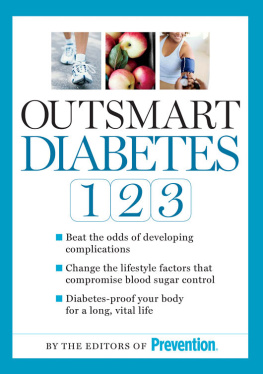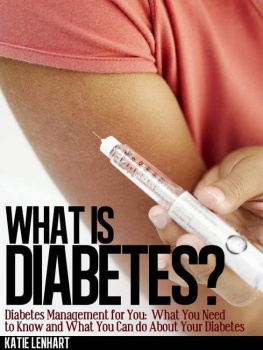Reverse Diabetes
Diabetes Diet and Healthy Habits to Lower Blood Sugar Naturally
Julia Chandler
Text Copyright 2017 by Julia Chandler - All rights reserved.
This document is geared towards providing exact and reliable information in regards to the topic and issue covered. The publication is sold with the idea that the publisher is not required to render accounting, officially permitted, or otherwise, qualified services. If advice is necessary, legal, or professional, a practiced individual in the profession should be ordered.
From a Declaration of Principles which was accepted and approved equally by a Committee of the American Bar Association and a Committee of Publishers and Associations.
In no way is it legal to reproduce, duplicate, or transmit any part of this document in either electronic means or in printed format. Recording of this publication is strictly prohibited and any storage of this document is not allowed unless with written permission from the publisher. All rights reserved.
The information provided herein is stated to be truthful and consistent, in that any liability, in terms of inattention or otherwise, by any usage or abuse of any policies, processes, or directions contained within is the solitary and utter responsibility of the recipient reader. Under no circumstances will any legal responsibility or blame be held against the publisher for any reparation, damages, or monetary loss due to the information herein, either directly or indirectly.
Respective authors own all copyrights not held by the publisher.
The information herein is offered for informational purposes solely, and is universal as so. The presentation of the information is without contract or any type of guarantee assurance.
The trademarks that are used are without any consent, and the publication of the trademark is without permission or backing by the trademark owner. All trademarks and brands within this book are for clarifying purposes only and are owned by the owners themselves, not affiliated with this document.
Table of Contents
Introduction
A ccording to the American Diabetes Association, diabetes currently ranks as the No. 7 leading cause of death in the United States, affecting more than 29 million people, or 9.3% of the population. Diabetes increases the risks of kidney disease, stroke, cardiovascular diseases, blindness, and other debilitating complications. Unfortunately, a medical cure is not currently available for diabetes. Injecting insulin or taking oral diabetic medications are effective in controlling blood sugar levels and slowing the development of complications, but not enough to cure the disease.
On the other hand, many people have lived with diabetes for a long and productive life. Some even have cured the disease. What are their secrets? An important takeaway from their success stories is that healthy lifestyles matter when dealing with diabetes. Eating healthy food, exercising regularly, and losing weight are all critical for blood sugar improvement. Through due diligence with healthy habits and medication, you can control and even reverse diabetes.
The goal of this book is to provide you with the best ideas to deal with diabetes on a day-to-day basis. The 16 well-thought-out series of habit-developing strategies in this book will enable you to adopt a healthier lifestyle, quit bad habits, and avoid diabetes complications. These tips are not a set of rigid rules, but rather, think of them as sensible and natural ways to lower blood sugar levels. These habits will help you take back control of your health and life, and win the battle against diabetes.
1. Educate Yourself
T he management of diabetes cannot be solely the responsibility of doctors. You must educate yourself in order to manage blood sugar and improve your condition.
Topics That You Should Become an Expert on:
W hat are the causes of diabetes?
What makes your blood sugar levels rise?
What is insulin and what is insulins role in diabetes?
Why your blood glucose spikes when you eat certain types of food?
What foods should you avoid? What should you eat?
What are diabetes complications and their causes?
What is the effect of exercise on your blood sugar levels?
How to keep blood glucose at healthy levels?
What causes diabetic coma?
How to separate diabetes facts from myths?
These are the topics that will be discussed in this book, but it is important for you to read more about these subjects. Learning about the disease will prepare you and enable you to deal with it better. Do more research on a topic and look at the different points of view. Make sure that youre reading content from a reliable site, such as the American Diabetes Association. Discuss what you learn with your doctor in your next visit.
Before you can beat an enemy, you have to know everything about it, its strength, and weaknesses. Use the same approach to defeat diabetes.
The Function of Insulin
D iabetes is a disease characterized by chronic high blood glucose, a type of sugar. Our bodies turn the carbohydrates that we eat into glucose, which is used to energize the body cells. The glucose is transported through the bloodstream to our muscles, liver, brain, and other vital organs where it is used; however, glucose cannot be absorbed by the body's cells without the presence of insulin.
Insulin is a hormone that signals the body's cells to absorb glucose in the bloodstream. The pancreas is the organ responsible for insulin production. Diabetics either do not produce enough insulin due to a malfunctioning pancreas, or their body's cells do not adequately respond to the insulin circulating through their bloodstream. As a result, the person's blood is flooded with glucose. A person with diabetes frequently feels fatigued, as his or her body cannot access its primary fuel source, even though plenty of glucose is present.
Types of Diabetes
T here are three types of diabetes.
Type 2 Diabetes
Type 2 (adult onset) diabetes accounts for 90 percent of all cases and typically strikes after age forty-five. With this type of the disorder, the body's cells do not properly respond to the insulin that is present in the bloodstream, resulting in high glucose levels despite the fact that adequate insulin is being produced. Although type 2 diabetes is typically diagnosed after age 45, an increasing number of individuals under the age of 30 are being diagnosed with the disorder each year. Although many cases of diabetes occur for no known reason, some health professionals point to a diet high in starch and sugar and a sedentary lifestyle as two primary culprits.
Type 1 Diabetes
Type 1 (juvenile) diabetes is not as common as type 2 diabetes and typically affects children under the age of fourteen. Although adults can become afflicted with this type of diabetes, it is considered very rare in those 35 years of age or older. Type 1 diabetes occurs when the pancreas produces little or no insulin. Although this type of diabetes is almost impossible to reverse naturally and requires medications, this book will help people with type 1 diabetes improve their general health.
Gestational Diabetes
Gestational diabetes is the third type of diabetes that occurs during pregnancy. It usually presents during the second trimester of pregnancy and resolves itself after the child is born. Up to 10 percent of all expectant mothers will develop gestational diabetes, many of whom will develop type 2 diabetes later in life.
2. Monitor Blood Glucose Levels
M onitoring your blood glucose levels is essential to treat and heal diabetes. Checking your blood glucose levels can reveal how food intake and exercise is affecting your blood sugar and whether any type of stress or sickness is detrimental to the disease. Most importantly, blood glucose tests can reveal dangerously high or low sugar levels.
Next page

